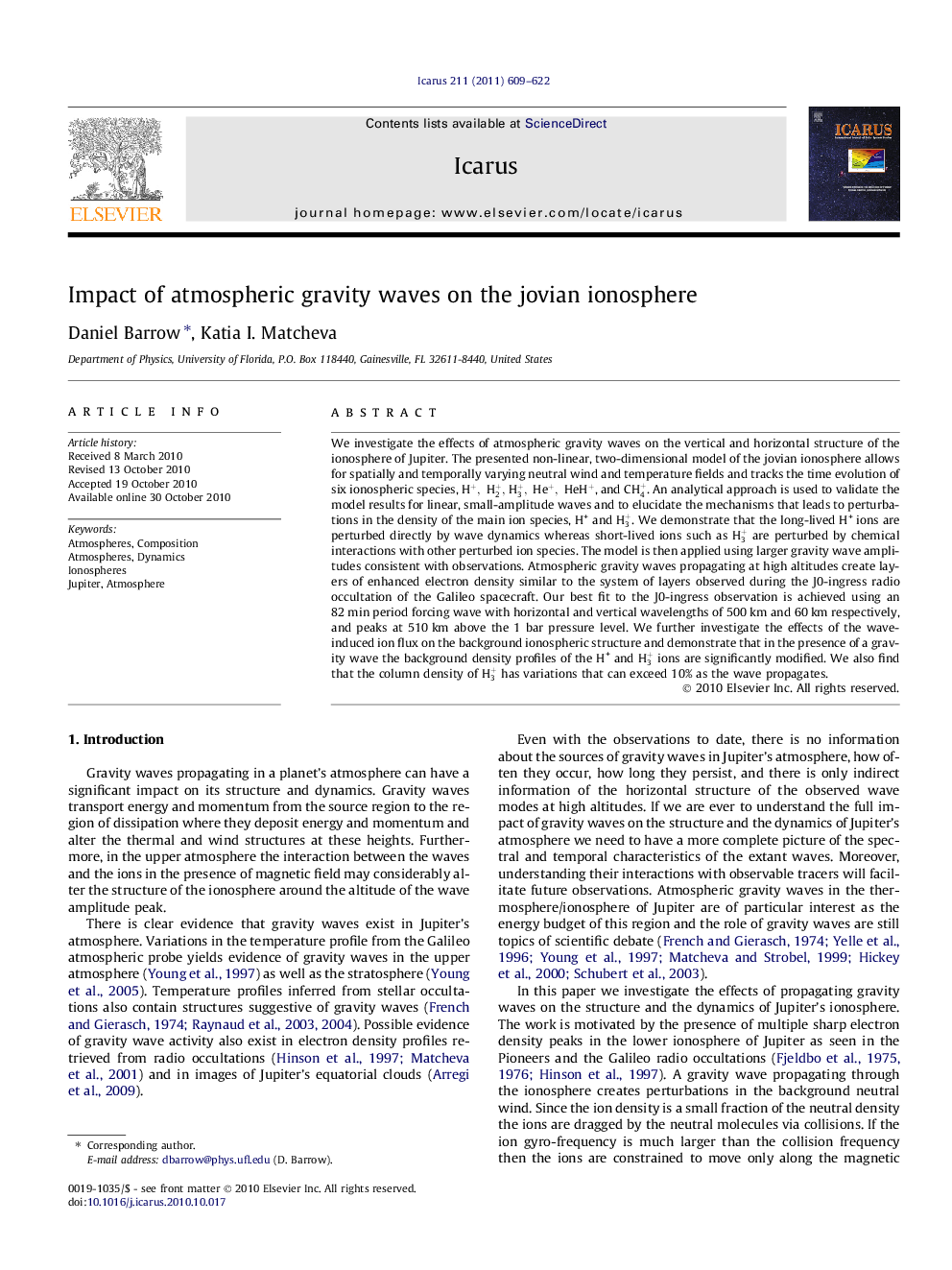| Article ID | Journal | Published Year | Pages | File Type |
|---|---|---|---|---|
| 1773798 | Icarus | 2011 | 14 Pages |
Abstract
We investigate the effects of atmospheric gravity waves on the vertical and horizontal structure of the ionosphere of Jupiter. The presented non-linear, two-dimensional model of the jovian ionosphere allows for spatially and temporally varying neutral wind and temperature fields and tracks the time evolution of six ionospheric species, H+,H2+, H3+,He+,HeH+, and CH4+. An analytical approach is used to validate the model results for linear, small-amplitude waves and to elucidate the mechanisms that leads to perturbations in the density of the main ion species, H+ and H3+. We demonstrate that the long-lived H+ ions are perturbed directly by wave dynamics whereas short-lived ions such as H3+ are perturbed by chemical interactions with other perturbed ion species. The model is then applied using larger gravity wave amplitudes consistent with observations. Atmospheric gravity waves propagating at high altitudes create layers of enhanced electron density similar to the system of layers observed during the J0-ingress radio occultation of the Galileo spacecraft. Our best fit to the J0-ingress observation is achieved using an 82Â min period forcing wave with horizontal and vertical wavelengths of 500Â km and 60Â km respectively, and peaks at 510Â km above the 1 bar pressure level. We further investigate the effects of the wave-induced ion flux on the background ionospheric structure and demonstrate that in the presence of a gravity wave the background density profiles of the H+ and H3+ ions are significantly modified. We also find that the column density of H3+ has variations that can exceed 10% as the wave propagates.
Related Topics
Physical Sciences and Engineering
Earth and Planetary Sciences
Space and Planetary Science
Authors
Daniel Barrow, Katia I. Matcheva,
